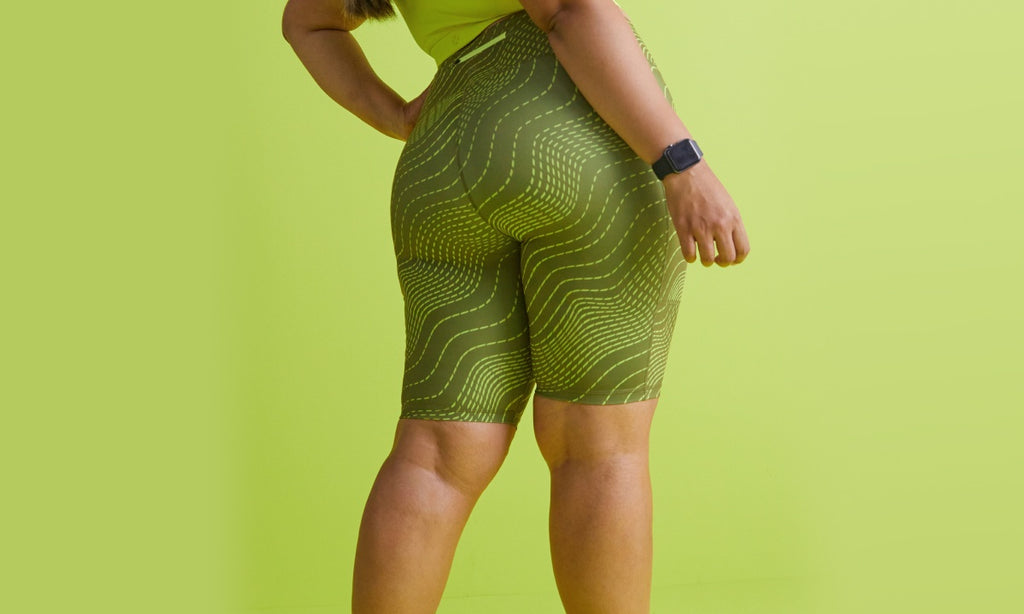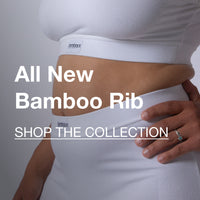Bike Shorts vs. Compression Shorts: What’s the Difference?

If you’ve been looking for a pair of skin-tight, stretchy shorts, you’ve probably come across different options. Two of those were likely bike shorts (also known as cycling shorts) and compression shorts.
At first glance, bike shorts and compression shorts seem like they could be the same product. They’re both made of stretchy material, have a high waist, and have similar lengths.
That must be making you wonder what the difference is between them. Well, there are several differences that we want to tell you about.
Let’s get into it so you can make the best decision on which fits your needs best.
Athletic Shorts
First, we’ll talk about what women’s bike shorts and compression shorts have in common and how they both can benefit you. The first characteristic to note about them is that they’re both athletic shorts.
It’s going to make a world’s difference when you’re active — whether it be in sports like gymnastics, soccer, or ultimate frisbee or in activities like pilates and yoga — to be wearing the right apparel for the occasion.
Wearing the wrong kind of apparel can hinder your performance. Your bottoms may not have the elasticity to stretch the way you need for that yoga pose. Your sports bra may not give you the compression or support needed to avoid soreness after activity.
That said, it’s important for you to be wearing athletic shorts while active. Something that both bike shorts and compression shorts should have in common are comfort, breathability, and versatility. And style (but we’ll get to that later).
Comfort
One aspect of comfortability is the kind of fabric your shorts are made out of.
If they’re made of the wrong fabric, you can risk irritation or chafing if there’s enough friction between your skin and the material. The incorrect fabric can also prevent your body from cooling down while you’re working out.
However, bike shorts and compression shorts are commonly found to be made of polyester and Spandex, and at times lycra. Both of these fabrics are useful for accommodating exaggerated movements while retaining their original shape and size.
This blend of polyester and Spandex is most popular in activewear and compression gear for these reasons. You want to be as comfortable as possible when you’re active. Otherwise, you can get distracted and even physically deprived of performing to the best of your abilities.
But as a side note, comfort doesn’t have to be gatekept for athletics. It turns out it’s common to find the same blend in loungewear. The blend can be used in leggings, one of the most popular lounging pieces.
Bringing it back to bike and compression shorts, because of the fabric used to make them, they provide the utmost comfort while you’re active. They may have slightly different functions (which we’ll get into later on), but that’s something you can expect, and will receive, from both.
Versatility
Athleisure started becoming popular around the 80s and 90s. At the same time, people were really starting to love wearing casual clothes more often, and many of us enjoy using our athleticwear for casual use. Depending on the specific pair of biker or compression shorts, it wouldn’t be strange to wear them outside of your physical activities.
Just look at the trend of biker shorts. Loads of brands have been recreating biker shorts to be worn as athleisure. Some even wear them for style’s sake alone. These Spark Bike Shorts provide a perfect example. You could wear them on your road bike commute, but they’re also right at home at the gym or the office.
They have all the materials you could want for working out and lounging. It has fabric that’s soft to the touch, stretchy, and breathable. Versatility is what comes to mind when we think about these shorts.
Now for the Differences
Of course, there are differences between the two. Let’s get into those details so that you know what you’re dealing with before you make your decision.
Compression Shorts
Compression shorts are used in various ways, but often as running shorts that you’d wear with a sports bra or t-shirt. One of the distinctions with compression shorts is that they are designed to be stiffer and tighter so that they apply pressure to your glutes, hamstrings, and quads.
That pressure encourages blood circulation and oxygenation throughout the body. This helps prevent injury and decrease recovery time for your muscles.
Part of that boost is from reducing muscle soreness. The way that compression shorts apply pressure to your glutes and upper legs can even get rid of your soreness completely while you’re wearing them. That, in turn, increases the longevity of your workout because you won’t feel as fatigued without the soreness.
As we just mentioned, compression shorts help with oxygenating the body. That means it increases the amount of oxygen that flows through it and, as a result, can help your muscles perform better.
Without oxygen, muscles can’t perform because they need it to produce energy. So, when there is an increase in supply, you’ll be able to work longer and harder.
Bike Shorts
Bike shorts are typically for cycling, so there are aspects of them that you won’t find in compression shorts. One is chamois. Chamois is a padded crotch sewn into bike shorts that help to reduce pressure on your crotch that occurs while you’re on a bike ride. Many mountain bike shorts don’t have an inseam in the crotch to reduce chafing for long-distance rides.
Whereas compression shorts restrict air supply, the best bike shorts are breathable. Naturally, as you’re exerting energy (or outside in warmer temperatures), your body gets hotter, and you start producing sweat. When that happens, having the right apparel will be a deciding factor in whether you’ll go on longer rides.
When the fabric is breathable, it allows air and moisture to flow easily through its fibers. That air will help with cooling your body temperature and removing sweat from your skin, which brings us to moisture wicking.
Just about any pair of high-quality bike shorts will have moisture-wicking abilities. This helps specifically with moving moisture from the skin outwards to then evaporate so that the fabric doesn’t get saturated with it.
Some wonder whether they should wear tight or baggy shorts to help with airflow and body temperature. Interestingly (and luckily for fans of mom jeans), high-waisted biker shorts are aerodynamic and can give cyclists a big boost on race day.
Check Out Spark Bike Shorts
As you can see, compression shorts and bike shorts may appear similar, but they have fundamental differences. Each one provides benefits that the other can’t.
If you’re looking for shorts that will keep your muscles warm and help with blood circulation and oxygen flow, then compression shorts will be the one for you.
Long Story Short: The TomboyX Short
If you have a mountain bike, love spending your time cycling through the backcountry, and you need shorts that will make you most comfortable for the sport that can double as loungewear, then go for a pair of bike shorts. If bike shorts are the shorts for you, then the bestseller Spark Bike Shorts from TomboyX would be a great place to start.
Some things you’ll love about these shorts are their fit, fabric, and finish. With its polyester spandex blend (78% recycled polyester and 22% spandex), you’ll have a comfy, snug fit that conforms to your body. It’s also high-rise and has side pockets to carry your phone and any other necessities while you’re on the go.
As far as fit, TomboyX has a wide size selection that starts with sizes as small as XS, reaching to XXL. And every size is fit-tested for all body types, so you’ll be sure to find a size that fits you perfectly.
They also have a HeiQ antibacterial and anti-odor finish. Once you start breaking a sweat, you won’t have to worry about your shorts clinging onto that bacteria that holds odor. They’ll stay fresh and scent-free.
These TomboyX Bike Shorts will also pair well with the Full Spectrum Bra. Try out this combo for the perfect workout and lounging outfit.
Sources:
What Are Compression Shorts And Do They Actually Work? | The Wired Runner
Do Compression Garments Work for Muscle Recovery? | Verywell Fit
The Brief history of the Bike Shorts | NSS Magazine






